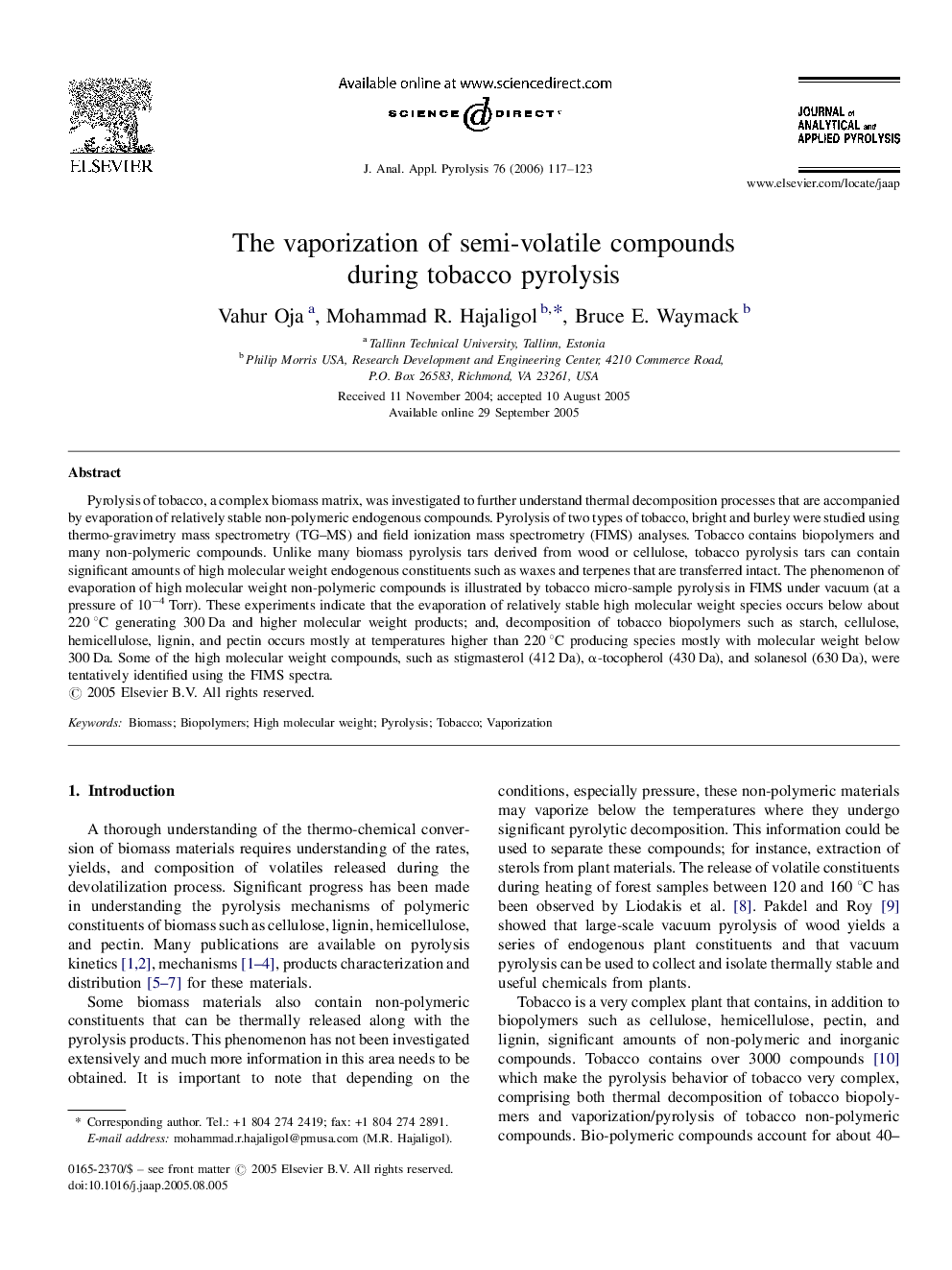| Article ID | Journal | Published Year | Pages | File Type |
|---|---|---|---|---|
| 1198209 | Journal of Analytical and Applied Pyrolysis | 2006 | 7 Pages |
Pyrolysis of tobacco, a complex biomass matrix, was investigated to further understand thermal decomposition processes that are accompanied by evaporation of relatively stable non-polymeric endogenous compounds. Pyrolysis of two types of tobacco, bright and burley were studied using thermo-gravimetry mass spectrometry (TG–MS) and field ionization mass spectrometry (FIMS) analyses. Tobacco contains biopolymers and many non-polymeric compounds. Unlike many biomass pyrolysis tars derived from wood or cellulose, tobacco pyrolysis tars can contain significant amounts of high molecular weight endogenous constituents such as waxes and terpenes that are transferred intact. The phenomenon of evaporation of high molecular weight non-polymeric compounds is illustrated by tobacco micro-sample pyrolysis in FIMS under vacuum (at a pressure of 10−4 Torr). These experiments indicate that the evaporation of relatively stable high molecular weight species occurs below about 220 °C generating 300 Da and higher molecular weight products; and, decomposition of tobacco biopolymers such as starch, cellulose, hemicellulose, lignin, and pectin occurs mostly at temperatures higher than 220 °C producing species mostly with molecular weight below 300 Da. Some of the high molecular weight compounds, such as stigmasterol (412 Da), α-tocopherol (430 Da), and solanesol (630 Da), were tentatively identified using the FIMS spectra.
